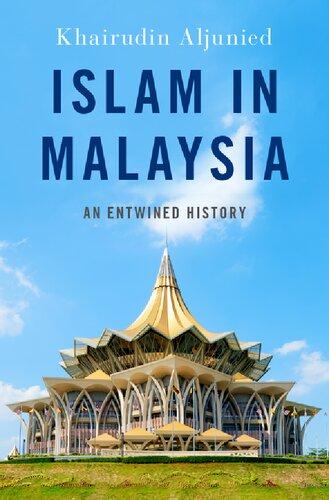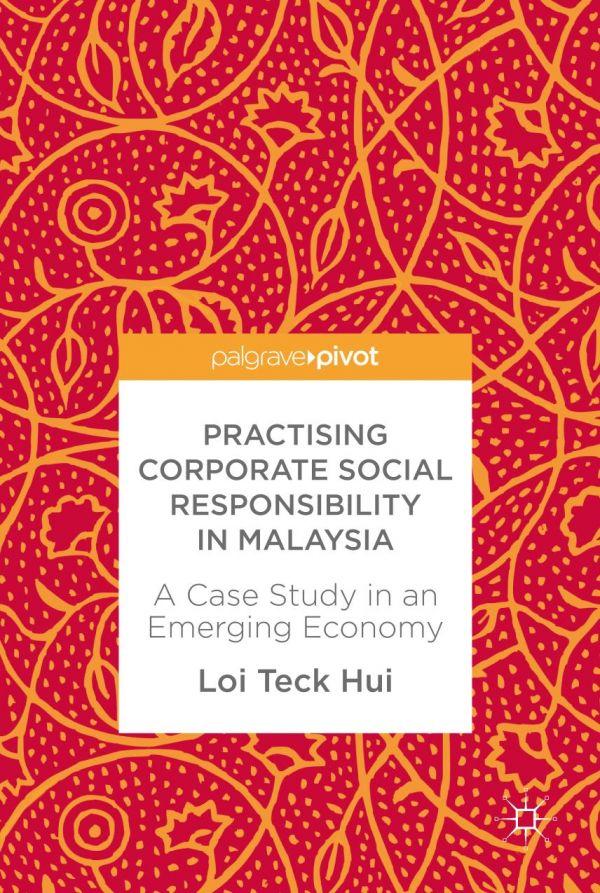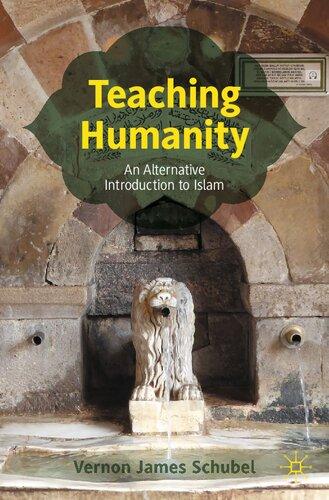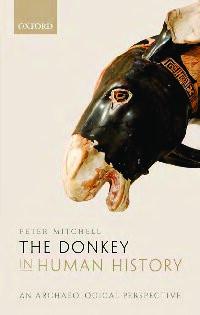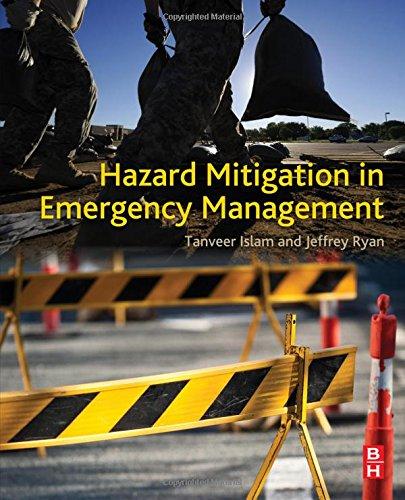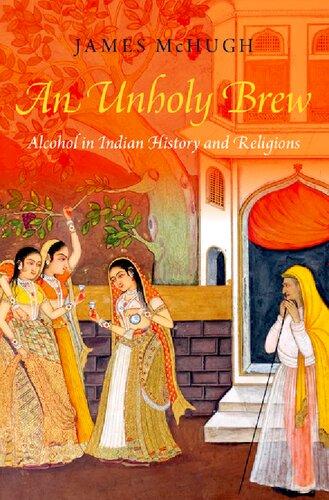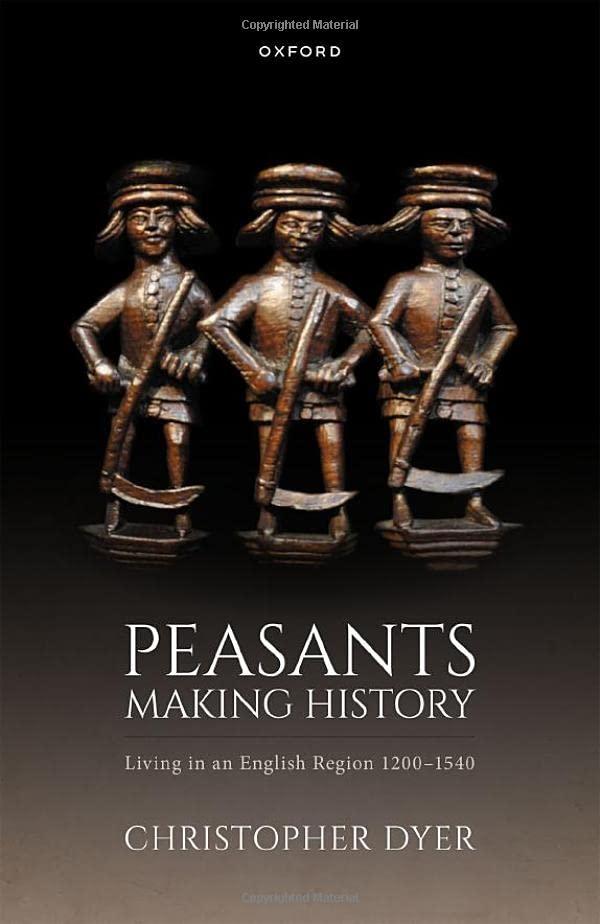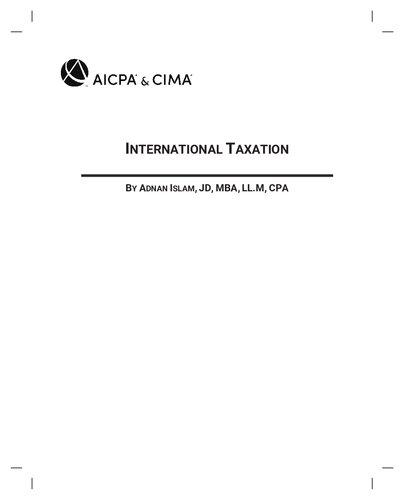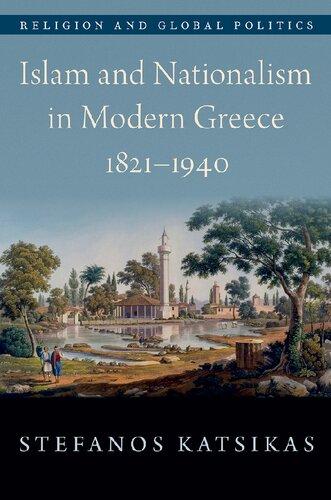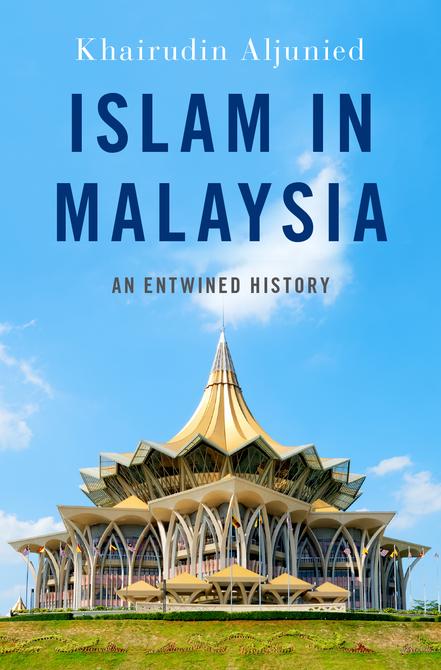Acknowledgments
Far too many promises have been broken and mountains of debt accumulated in the process of writing of this book. Three years ago I assured my wife that I would be taking a long break upon the completion of a monograph. Two books later, I am still comforting her during late-night conversations that the muchawaited pause from writing is just around the corner. I am left with one last excuse: this book and those that came before it were written with her in mind. So the first note of thanks (and love) must therefore go to Marlina, who stood by me in difficult times, in moments of joy and periods of sadness. Never once had she complained about my demanding schedule and time spent away from her and my six fast-growing children: Inshirah, Fatihah, Yusuf, Muhammad, Yasin, and Furqan. This book is dedicated to her.
A host of institutions and generous individuals have made this book possible. The National University of Singapore granted me leave from teaching. Jonathan Brown, an amazing scholar and friend, arranged my appointment as the Malaysia Chair of Islam in Southeast Asia at Georgetown University’s Prince Alwaleed Bin Talal Center of Muslim- Christian Understanding (ACMCU). The time in ACMCU was memorable. John Esposito left the most lasting impression on me, urging to get the book done while reminding me to spare some time to have fun. I benefited so much from conversations with Tamara Sonn, Yvonne Haddad, and John Voll.
While based at ACMCU, I traveled and shared aspects of the ideas found in this book at various seminars organized at Duke, Hofstra, Stockholm, Lund, and Leiden universities and the University of Sains Islam Malaysia. I must thank Bruce Lawrence, Timothy Daniels, Johan Lindquist, Ben Arps, and Mahazan Abdul Mutalib for arranging these productive sessions with staff and students. Professor Osman Bakar provided many useful pointers and publications that shaped the writing of this book.
Beyond work, I am grateful to members of the Herndon study circle, who kept me happy and sane. Asmar, Gunawan, Sonny, Syafarin, Sandy, Umar, Hafidz,
x
Acknowledgments
Oscar, Reza, Ino, and Irwan were among the best of friends, always there to help and never ceasing to offer encouragement. Derek Heng, Anthony Milner, Shamsul A.B., Wan Zawawi, Raj Brown, Syed Faizal, Kamaludeen, Mahazan, Maszlee, Hafiz, Shuaib, Sujuandy, Shaharudin, Faizal, Iqbal, Sven, Emin, Daman, Rosdi, Irwin, and Ermin helped in countless ways.
The two anonymous reviewers improved my thinking and writing of this book. My editor at Oxford University Press, Cynthia Read, and her team guided me from the conceptualization all the way through publication. They have certainly made it better than I could have done on my own.
My parents have been supportive of my work throughout, and this book bears the traces of my love and gratefulness to them. May Allah reward them abundantly for all their sacrifices and prayers.
ABIM
Abbreviations
Angkatan Belia Malaysia
ADIL Pergerakan Keadilan Sosial
API
Angkatan Pemuda Insaf
ASNB Amanah Saham Nasional Berhad
ASWAJA Pertubuhan Ahli Sunnah Wal Jamaah Malaysia
AWAS
Angkatan Wanita Sedar
BA Barisan Alternatif
BARJASA
Barisan Anak Jati Sarawak
BATAS Barisan Tani SeMalaya
BIMB
BKM
Bank Islam Malaysia Berhad
Barisan Kebangsaan Melayu
BMA British Military Administration
BN Barisan Nasional
BPS Barisan Pemuda Sarawak
CPIRUHAA Committee for the Promotion of Inter-Religious Understanding and Harmony Among Adherents
DAP Democratic Action Party
FMS Federated Malay States
GAGASAN Gagasan Demokrasi Rakyat
GEPIMA Malaysian Indian Muslim Youth Movement
GERAK Gerakan Keadilan Rakyat Malaysia
GERAM
Gerakan Angkatan Muda
GDP Gross Domestic Product
HIKMAH Harakah Islamiah
HM Hizbul Muslimin
IDB Islamic Development Bank
ICA Industrial Co-ordination Act
IAIS International Institute of Advanced Studies
IIFSO International Islamic Federation of Student Organisation
IIIT International Institute of Islamic Thought
List of Abbreviations
IKIM Institut Kefahaman Islam Malaysia
IMF International Monetary Fund
IMP Independence of Malaya Party
INDAH The Institut Dakwah dan Latihan Islam
IOK Islamization of Knowledge
IRF Islamic Renaissance Front
IRC Islamic Representative Council
ISMA Ikatan Muslimin Malaysia
ISTAC International Institute of Islamic Thought
JAKIM Jabatan Kemajuan Islam Malaysia
JAWI Jabatan Agama Wilayah Persekutuan
JIM Pertubuhan Jamaah Islah Malaysia
JKSM Jabatan Kehakiman Syariah Malaysia
KJM Khairat Jumaat Muslimin
KMM Kesatuan Melayu Muda
KMS Kesatuan Melayu Singapura
KRIS Kekuatan Rakyat Istimewa
LEPIR Lembaga Pendidikan Rakyat
LKPI Lembaga Kebajikan Perempuan Islam
LUTH Lembaga Urusan Tabung Haji
MACMA Malaysian Chinese Muslim Association
MAPEN Majlis Perundingan Negara
MATA Majlis Agama Tertinggi Se-Malaya
MCA Malayan Chinese Association
MCP Malayan Communist Party
MEC Malay Education Council
MIC Malayan Indian Congress
MIG Medical Interest Group
MNC Multinational companies
MPAJA Malayan Peoples’ Anti-Japanese Army
MPM Majlis Pelajaran Melayu
MSM Majlis Syura Muslimun
NEP New Economic Policy
NGOs Non-governmental organizations
NOC
National Operations Council
OIC Organization of the Islamic Conference
OWC Obedient Wives Club
PLO Palestinian Liberation Organization
PANAS
PAP
PAPAS or PESAKA
PAS
Parti Negara Sarawak
People’s Action Party
Parti Pesaka Anak Sarawak
Parti Islam Semalaysia
PASPAM
PBB
Pemenang
PERAM
PERKASA
PERPEMAS
PERKIM
PETA
PH
PIM
PIP
PIS
PIT
List of Abbreviations
Persaudaraan Sahabat Pena Malaya
Parti Pesaka Bumiputera Bersatu
Persatuan Melayu Pulau Pinang
Pemuda Radikal Melayu
Pertubuhan Pribumi Perkasa
Pusat Perekonomian Melayu Se-Malaya
Pertubuhan Kebajikan Islam Malaysia
Pembela Tanahair
Pakatan Harapan
Persatuan Ikhwan Muslimin
Persatuan Islam Putatan
Persatuan Islam Sabah
Persatuan Islam Tawau
PKM Parti Komunis Malaya
PKMM
PKPIM
Persatuan Kebangsaan Melayu Malaya
Persatuan Kebangsaan Pelajar Islam Malaysia
PKR Parti Keadilan Rakyat
PMIP
PMSP
PNB
PPBM
Pan-Malayan Islamic Party
Persatuan Melayu Seberang Perai
Permodalan Nasional Berhad
Parti Pribumi Bersatu Malaysia
PPI Pusat Penyelidikan Islam
PPP
People’s Progressive Party
PR Pakatan Rakyat
PRB
PRM
PUTERA
PUTERA-AMCJA
SAN
SANAP
SAR
SNAP
SITC
SIS
Parti Rakyat Brunei
Parti Rakyat Malaya
Pusat Tenaga Rakyat
Pusat Tenaga Rakyat–All-Malaya Council of Joint Action
Sekolah Agama Negeri
Sabah National Party
Sekolah Agama Sakyat
Sarawak National Party
Sultan Idris Training College
Sisters in Islam
SS Straits Settlements
SUPP
UMNO
UMS
UNKO
USIA
USNO
Sarawak United Peoples’ Party
United Malays Nationalist Organisation
Unfederated Malay States
United National Kadazan Organization
United Sabah Islamic Association
United Sabah National Organization
List of Abbreviations
UCSTA United Chinese School Teachers’ Association
WADAH Wadah Pencerdasan Umat
WAMY World Assembly of Muslim Youth
YADIM Yayasan Dakwah Islamiah Malaysia
YMU Young Muslim Union
YPB Yayasan Pelaburan Bumiputera
Glossary
adat customs
akal reason
asabiyyah group feeling
bai’ah loyalty
bangsa race bid’ah innovations da’wah Muslim missionary activity datus noblemen derhaka treason
dhimmis non-Muslim minorities
Eidul Fitri celebration of the conclusion of the fasting month
fatwa religious edict
fiqh jurisprudence
hadith Prophetic sayings
hajj pilgrimage to Makkah
halal permissible
halaqah study circles haram impermissible
hijab Muslim headscarf
hudud Islamic criminal law
ijtihad independent reasoning imam prayer leaders
islah renewing and reforming
jihad struggle
jizya poll tax
kafir unbelievers
khalwat close proximity between unmarried couples suspected of engaging in immoral acts
kerajaan Malay kingdoms
keramat miracles
khurafat animistic superstition
khutbahs sermons
madrasahs Islamic schools
maharaja great ruler
mandalas circle of kings
markaz center
maulid celebration of the birthday of the Prophet
muftis expounder of Islamic laws
murshid spiritual guide
nama titles
niqab face veils
penghulu village chief
perang sabil holy war
pondok village boarding school
qadi judge
qaris persons who recite the Qur’an rajas kings
shahid martyr
shari’a Islamic ethical and religious code
shuyukh eminent scholars
Sunnah Prophetic tradition
surau prayer houses
syahbandar harbormaster
syair rhythmic four-line stanzas
rakyat masses
ta’ awun mutual assistance
tajdid renewal
tariqahs Sufi brotherhoods
taqdir fate
taqlid blind imitation
tarbiyyah education
titah commands
ukhuwwah brotherhood
ulama scholars
ummah global Muslim community
usrah family
wali saints
waqf Muslim endowment
warath al-anbiya’ inheritors of the Prophet
wasatiyyah moderation
zakat Islamic tithe zikr remembrance of God zillullah fil-alam God’s shadow in the world zina adultery
Introduction
In late April 2014, Barack Obama made a historic diplomatic trip to Malaysia, marking the first time in fifty years since an American president last visited what is regarded by Muslims globally as a leading Islamic country.1 That Obama was the first African American president whose Arabic middle name is Hussein added to the euphoria among many Malaysian Muslims about his twoday stay in a country the president knew well as a child growing up in neighboring Indonesia. Obama’s visit was significant in other ways. He spent time touring and paying tribute to one of the largest Muslim sacred sites in Kuala Lumpur, the Masjid Negara (National Mosque; Figure I.1). “There can be no better way for Obama to honour Islam than by visiting Masjid Negara,” said the religious adviser to the prime minister, Tan Sri Dr Abdullah Md Zin. “It will be interesting to know what he has to say about the mosque and Islam.”2
Obama was indeed visibly impressed with the stunning architecture and splendor of the mosque, which, to him, reflected the cosmopolitan outlook of Islam in Malaysia. But he had something equally pertinent to say about the Muslim-dominated nation. During a town hall meeting with youth activists on the same day, Obama addressed what he felt was Malaysia’s enduring strength and greatest challenge that mirrored the ongoing struggles in his home country: relations between people of different ethnic backgrounds.
Here in Malaysia, this is a majority Muslim country. But then, there are times where those who are non-Muslims find themselves perhaps being disadvantaged or experiencing hostility. In the United States, obviously historically the biggest conflicts arose around race. And we had to fight a civil war and we had to have a civil rights movement over the course of generations until I could stand before you as a President of African descent. But of course, the job is not done. There is still discrimination and prejudice and ethnic conflict inside the United States that we have to be vigilant against.

So my point is all of us have within us biases and prejudices of people who are not like us or were not raised in the same faith or come from a different ethnic background. But the world is shrinking. It’s getting smaller. You could think that way when we were all living separately in villages and tribes, and we didn’t have contact with each other. We now have the Internet and smart phones, and our cultures are all colliding. The world has gotten smaller and no country is going to succeed if part of its population is put on the sidelines because they’re discriminated against. Malaysia won’t succeed if non-Muslims don’t have opportunity.3
Obama’s frank assessment of the multi-religious landscape in Malaysia left many Malaysians jittery. I was equally fascinated by his remarks. Given the long hiatus since an American president last visited Malaysia, one would expect Obama to exercise some diplomatic tact, even if he had meant it to be purely gestural. It was not long before Obama’s comments sparked a heated Internet debate about the state and future of Malaysia. The president raised many delicate issues, providing the inspiration for this book. Was he right about non-Muslims feeling left out in a country known for its unique diversity and inclusivity?4 Is Malaysia’s global connectedness a recent phenomenon? Or has it been that way much longer than Obama imagined it to be?
Figure I.1 Masjid Negara, Kuala Lumpur
In search of the answers to these and many other questions, I seek to tell the story, or, should I say, the biography of Islam in Malaysia. It is a story that goes far back in time to almost a millennium ago. It is a story about contacts and connections, relations and exchanges, that both confirm and yet depart from Obama’s take on Islam and Muslims there. It is also a story that offers a new methodological approach and a fresh look at Islam in Malaysia, how it was infused gradually in a space that was originally under the sway of non-Muslims and how it became what it is today. The story of Islam in Malaysia, to my mind, has been partially told and narrated in patches, falling short of providing us with a complete portrait of the enduring fates and fortunes of Muslims in that part of the world. This book initiates a movement toward a much richer perspective about an equally important group of Muslims located far away from the House of Islam that has been shaping the expanding ummah (global Muslim community).
To be sure, historical writings on Islam and Muslims in Malaysia have developed rapidly in the last century.5 Although extensive, the canvass of works writ large can be generally divided into a few recurrent themes. The first and perhaps most prevalent theme pertains to developments in political and radical Islam, now popularly termed “Islamism.” Scholars working in this area track the growth of Islamic resurgence in Malaysia that began in earnest in the 1970s. The literature on political and radical Islam has developed tremendously in the wake of the 9/11 attacks in the United States and in the midst of persistent threats posed by extremists. One major line of argument discernible from such a strand of scholarship is that Islam in Malaysia was more inclusive and embracing prior to the advent of revivalist pulses from South Asia and the Middle East. The donning of the hijab (Muslim headscarf), the establishment of Islamically compliant institutions, the growth of assertive Islamic movements, and calls for the establishment of hudud (Islamic criminal law) and the shari’a (Islamic ethical and religious code), as these scholars have it, are indications that Muslims in Malaysia set on the path of conservatism and conflict with non-Muslims.6
The second thread of scholarship covers the social, devotional, educational, and economic dimensions of the history of Islam in Malaysia. Included in such works are questions relating to rituals, customs, traditions, festivals, and ceremonies that characterized Islam, in addition to studies on the functions and fates of Islamic schools, mosques, and other religious institutions. These writings examine various transformations and adaptations that Muslims in Malaysia underwent in meeting the demands of colonialism, modernity, and globalization.7
To be added to this are academic writings that center around the study of intellectual and scholarly currents in Malaysia. The ulama (Muslim scholars),
reformers, intellectuals, and opinion makers and their ideas about Islam as it was manifested and promoted in Malaysia are placed in sharp relief. Historians of Malaysia have spent much ink explaining how and when Islam first arrived in Malaysia, on the impact of the faith in society, as well as on the persistence of traditionalism and its interactions and conflicts with the forces of reformism and modernism.8
These seemingly divergent research paradigms share some similar features. They deal with short time spans, covering the kerajaan (kingship), colonial, and/ or postcolonial eras. No work has yet to surpass the limitations of time to provide a seamless account of the millennium-old venture of Islam in Malaysia within the confines of a single study. Furthermore, much of the existing corpus of works pays inordinate attention to developments within Malaysia and less to how Islam in that geopolitical terrain interacted with many developments from without. Such “methodological nationalism,” where the nation-state is used as defining units and fixed perimeters, has blinkered scholars of the regional and, more importantly, global developments that have shaped Islam in Malaysia since the eleventh century.9 Perhaps more crucially, the many historical works on Islam in Malaysia that have come down to us are generally Muslim-centric. Very little coverage has been given to the part of non-Muslims in the shaping of social lives and piety of Muslims and how they were also shaped by the waves of Islamization that flowed into Malaysia.
While benefiting from the insights and extending the limits of previous scholarship, this book seeks to bring the analysis of Islam in Malaysia to a different direction, which I hope will have implications for the study of the history of Muslims globally. I argue that Islam has maintained its presence in Malaysia for over a thousand years and that this long and intriguing past can be best approached through what I term “entwined history.” As the French intellectual Fernand Braudel reminded us: “if one wants to understand the world, one has to determine the hierarchy of forces, currents, and individual movements, and then put them together to form an overall constellation. Throughout, one must distinguish between long-term movements and momentary pressures, finding the immediate sources of the latter and the long-term thrust of the former.”10 In the same vein, I argue that if one wants to fully unravel the millenniumold venture of Islam in Malaysia through the lenses of entwined history, one has to consider the long-term interrelationships, interplay, connections, exchanges, and nexus between four key forces of history: global currents and local appropriations, the conduct of states and the everyday agency of Muslims in society, scholarly and popular pieties, and, more importantly, the roles of Muslims and non-Muslims.
Global Currents and Local Appropriations
Malaysia was globalized even before the idea of globalization gained the currency it has today. Buddhist and Hindu kingdoms established religious, political, and economic networks that stretched as far as Europe even before Islam became a world-conquering force. These kingdoms were plugged into interregional trading systems since the first century ad. Such links were expanded when Islamic sultanates dominated Malaysia, right through the transition from colonial and subsequently postcolonial eras. If West African Islam was formed out of the exchanges between three main civilizations11, Islam in Malaysia is a byproduct of five: the Arabian, Indian, Persian, Chinese, and European civilizations. It was and still is linked to the ummah and has always been a constituent and contributive part of the Islamic world system.12
The approach of entwined history acknowledges this global connectedness and its civilization influences. It calls for a deep sensitivity toward how global currents shaped local realities and how locals have appropriated and fashioned global influences to meet their needs and demands. It demands an attentiveness to the movement of ideas, peoples, goods, technologies, arts, and cultures across oceans, seas, and air into and from Malaysia, and how these forces interacted and molded the lives of Muslims and non-Muslims in local societies. Islam, for that matter, originated from the Arab world, traversing across lands and oceans in Asia, Europe, and Africa to its eventual infusion into Malaysia because of the continued interactions between Muslims globally with the diverse population in that country. Such global–local exchanges began as early as the eighth century, sustained by trade and the activities of Sufi as well as Arab, Indian, Persian, and Chinese scholars and missionaries. Their quests lived through the ebb and flow of Muslim and European empires and have taken on new forms in the present moment with the global Islamic resurgence and the digital age.13
The hajj (pilgrimage to Makkah) ensured that the “Muslim Web,” to tweak the term used by John and William McNeill, endured the vicissitudes of time.14 An interesting anecdote to illustrate this global–local connection is the Muslim uprising against the British in the Malay state of Terengganu on May 21, 1928. MalayMuslim rebels carried the Ottoman red flag, the Bendera Stambul (Istanbul Flag), as a symbol of their allegiance to the Ottoman empire. This was one among the many uprisings during the age of Pan-Islamism where Ottoman symbolism was used to fan anti-colonial passions.15 In 1979, the onset of the Iranian Revolution and Islamic revivalism in Egypt inspired the creation of Muslim movements such as the Angkatan Belia Malaysia (ABIM), Darul Arqam, and the spread of the Indian-based Tablighi Jamaat (or Jemaah Tabligh) in Malaysia. Led by, Anwar
Ibrahim (the prime minister-in-waiting), the ABIM adopted a comprehensive program of action to reform the Malaysian state and society to become in line with Islamic norms and way of life.16
The words of Marshall Hodgson are most instructive in cementing the point about global–local connections further:
In a “history of mankind,” Islamic civilization should be studied not only in the several regions where it flourished, but also as a historical whole, as a major element in forming the destiny of all mankind. The vast Islamic society certainly has been this. Not only in the first centuries, but also in the later periods the fate of Islam is of world-wide import.17
The Malaysian-Islamic civilization should thus be examined against the backdrop of the global situation because it forms the historical whole Hodgson was referring to. A leading scholar of Islam in Southeast Asia, Osman Bakar, has identified three waves of globalization of which Muslims and non-Muslims in Malaysia were active participants. He describes these three waves as “Muslimdominated globalization” (eleventh to sixteenth centuries), “Westerndominated globalization” (sixteenth century to the Second World War), and “American- dominated globalization” (Second World War to the present). The third wave of globalization saw the importation of American Muslim scholarly ideas into Malaysia. Fazlur Rahman (1919–1988), Ismail Al-Faruqi (1921–1986), Fathi Osman (1928–2010), and Seyyed Hossein Nasr (1933–), to name a few, were the mentors and teachers of many influential Muslim politicians, scholars, opinion makers, and activists. As a result of these waves of globalization, as Osman perceptively observes, Muslims in Malaysia have grown in number and the faith’s impact on society has deepened. As the world became more globalized and sophisticated in terms of technology, transport, and communications, the reach of Islam in Malaysia became more extensive than ever before.18
Put it differently, Islam and Islamization in Malaysia grew with globalization and derived much strength from it. To arrive at a more nuanced picture of the impact of these three waves of globalization and the influence of intellectual currents from overseas upon the evolution of Islam in Malaysia, this book illuminates on how local actors, states, institutions, and collectives appropriated ideas, peoples, goods, technologies, arts, and cultures and combined them to fit unique local contexts. Entwined history, from this angle of vision, is an approach that places the global and the local within a single unit of analysis to explain fully the Malaysian-Islamic “historical complex.”19
Policies of States and Everyday Agency of Societies
States and societies form the bedrocks of civilizations, and the Muslim civilization was no exception. John Esposito sums it up well: “Islam is not simply a spiritual community. Rather, it also became a state, an empire. Islam developed as a religiopolitical movement in which religion was integral to state and society.”20 Seen in this light, the writing of an entwined history of Islam in Malaysia can only be complete when we consider the interrelationships between the conduct of states and the everyday agency of the common people. For more than seven centuries since Muslims established the first Muslim state in Perlak, political power in island Southeast Asia lay in the hands of kerajaan, which were essentially states ruled by charismatic and divinely inspired kings whose continuous hegemony rested on both the coercion and consent of societies.
The kerajaan had no clearly defined borders or territories until the advent of colonialism, when technologies of mapping as well as the demarcation of spheres of influence were enforced. In many ways, the kerajaan predated today’s ideal of the borderless world where people could move in and out of protected spaces without having to carry with them the burden of preceding identity and past loyalties. The raja (king) embodied the state and the people. Drawing from Persian and Turkish notions of kingship, Malay texts mythologized the rajas as the zillullah fil-alam (God’s shadow in the world) to be revered, respected, and served. To quote Anthony Milner, the raja was “central to every aspect of Malay life.”21 He was the custodian of Islam, the promoter of the religion, who infused it through diplomacy, conquests, and supporting missionaries. Through him, the shari’a (Islamic legal code), along with the Malay adat (customs), were preserved and implemented in Malay states of what would soon be known as Malaysia. The raja was, however, dependent and beholden to men and women in societies who venerated him when he embodied peace and justice but would rebel against him in the event of political turmoil and widespread injustice. The Malay proverb Raja yang adil disembah, raja yang zalim disanggah (A just king is to be obeyed, a cruel king is to be defied) captures this reciprocal relationship between the ruler and the ruled in Malaysia well. To be a king was to either be benevolent or risk revolt.22
The powers of the rajas eclipsed when Malay kingdoms fell under European rule, beginning with the fall of Melaka to the Portuguese in 1511. With the exception of the port cities of Penang, Melaka, and Singapore, the colonial powers did not obliterate the functions of the rajas totally. Colonialism brought about the imposition of a secular system of governance that coexisted alongside the kerajaan order. The colonial state, unlike kerajaan, however, sharpened the notions of
territory, relegated the shari’a to the realm of personal and family laws, and organized groups in society along the lines of divide and rule politics. This resulted to the creation of a plural society that was divided along racial lines. Islam and the rights of Malays as the indigenous peoples were legally upheld, but their political influence and bureaucratic significance were severely curtailed.23
The approach of entwined history takes into account these longue durée developments and the effects on the changing roles of states upon societies in the postcolonial period. I narrate the ways in which states and societies weathered different systems of governance. When states became weak and unable to manage societies under their jurisdiction, ordinary people take on the mantle of defending their rights and faith. This can be vividly discerned in the colonial states’ imposition of forms of knowledge and statecraft that honed racial and religious divisions. Muslims responded through violent jihad (struggle) and through reformist movements in the path to rebuild societies that could no longer depend on the declining authority of the kerajaan. Amidst these contestations, a plural society consisting of various distinct races became a permanent feature of Malaysia. Rajas were consigned to being symbols of Malayness. Islam became ethnicized and regarded as an essential marker of the Malay identity by the postcolonial states that inherited racialized ideas of the religion from the colonial rulers.24
The everyday agency of Muslims in societies in postcolonial Malaysia was constantly stirred by the states’ concern with sustaining the dominance of Malay Muslims over other ethnic groups. In the last chapter of this book, I show that this has led to cycles of resistance and calls for reforms by intellectuals, political parties, and civil society organizations, with the most iconic being the Reformasi movement that began in 1998. By the turn of the twenty-first century, MalayMuslim youths based in Malaysia and overseas were at the vanguard of many initiatives that questioned the policies of the Malaysian state through the use of cyberspace, boycotts, and demonstrations as expressed in the Bersih rallies. These movements aimed at recovering the cosmopolitan character of Malaysian life and politics as well as of Malaysian Islam in the face of injustice.25 Undoubtedly, amidst the long-running contests and struggles between states and societies, Islam in Malaysia continued to remain moderate and cosmopolitan at the everyday level. But the postcolonial state, I contend, has yet to keep pace with the changes in Malaysia. The recent 2018 general elections provide a glimmer of hope.26
Scholarly and Popular Pieties
The tensions and dialogues between scholars and other purveyors and practitioners of Islam form another aspect of entwined history. The ulama are universally seen
in Islam as warath al-anbiya’ (the inheritors of the Prophet), acting as an intermediary between the state and society. Or as a prominent Malay-Indonesian Muslim scholar, Haji Abdul Malik bin Abdul Karim Amrullah (Hamka), has it, to take on the mantle of the ulama is to balance the rage of the people and pressure from the state.27 For over a millennium in Malaysia, the ulama were held in reverence as persons who were trained in religious texts and were acquainted of the changing demands of the contexts in which they were situated. Such in-depth knowledge of both texts and contexts enabled them to take on a whole array of professions from serving as government officials, muftis (expounder of Islamic laws), and qadis (judges), to performing the roles of religious teachers, counselors, village headmen, missionaries, and leaders of reform and piety movements. Many ulama participated in perang sabil (holy war) against the European powers as and when religious beliefs were under threat. Much like the ulama in South Asia and the Middle East, the ulama in Malaysia “continue to enlarge their audiences, to shape debates on the meaning and place of Islam in public life, to lead activist movements in pursuit of their ideals. For them, there is no single way of defending their ideals or of making them practical or relevant in the world.”28 In employing the term ulama in this book, I am referring to two schools of Islamic scholars: the traditional and reformist. Both exercised a high degree of influence upon local societies, and both were sometimes locked in intellectual combat with one another about which version Islam ought to be taught and disseminated in society. Both schools of ulama disprove the observations made by some analysts that Malaysia did not have a long heritage of autonomous ulama.29 The independence and vivacity of the ulama went as far back as the period when Islam began to found its footing in Malaysia right up till today. These ulama functioned as conduits between lived and normative Islam in their pursuit to make societies more receptive to the laws and universal values of Islam.
As persons who were steeped in the knowledge of the laws and maxims of Islam, the ulama have come in conflict with popular expressions of Islamic pieties. To Bruce Lawrence, popular Islam is “the shared notion of a world view and a pattern of living that characterizes most Muslims in Asia and Africa.”30 Pervasive as popular Islam may be, such manifestations of Islam do not resonate with most ulama, whose reasoning is usually centered on unyielding compliance to scriptural injunctions. “Popular Islam,” according to John Voll, “is often defined in negative terms as Islamic experience that has been “diluted” by non-Islamic practices. Traditionally strict ulama as well as modern intellectuals tend to condemn what they see as magical practices and superstitions.”31 This book examines the various popular displays and articulations of Islam that have come under the intellectual chopping block of the ulama. Notable among these were those propagated by mystical groups and by modernist and secular activists who gained prominence
starting in the nineteenth century with the rapid spread of colonial education in Malaysia and the return of students who studied in the West. Supported and sponsored by state institutions and state Islamization programs since the mid1980s, the ulama in Malaysia have vigorously declared many individuals and groups as deviant should their teachings run contrary to the time-honored Asharite theology and Shafi’ite school of law that formed the dominant frame of reference for Muslims in Southeast Asia for many generations. Among those that came under the critique by the ulama were, at times, the ulama themselves, as seen in the case of the banning and stigmatization of the reformist Kaum Muda movement and Salafi scholars in colonial and postcolonial Malaysia.32
This book goes beyond detailing the confrontations among the ulama and between the ulama and the common people. It strives to make apparent the intersections between scholarly discourses of the ulama and popular pieties to show that both influenced and sometimes fed off one another. That scholarly discourses intersect with popular pieties can be clearly seen in the case of religious movements such as the Darul Arqam, ABIM, Parti Islam Semalaysia (PAS), and the Islamic Representative Council (IRC). The ulama who were active in these groups appealed to the masses and stirred up popular pieties to mobilize Muslims. The scholars and the ordinary Muslims are interdependent just as scripturalist Islam derives its strength from popular pieties. The scholars furthered the processes of rationalization in Malay-Muslim society as they transitioned from Hindu-Buddhism to Islam and from feudalism to modernity, just as they were questioned by the learned masses when they fell short of upholding the importance of rationality and when they failed to adapt to social and global changes.33
The Roles of Muslims and Non-Muslims
One of the long-standing problems in Islamic historiography is the lack of attentiveness to non-Muslim voices in the overall historical narrative. This tendency pervades the writings of historians, particularly those working on the early stages of Islamization in the Arab world, according to Robert Hoyland in his latest and influential book. The role of Muslims and the divine are duly emphasized in contrast to the crucial involvement of non-Muslims in shaping the course of Muslim history.34 Hyperbolic as this observation may appear, it nevertheless captures, for the most part, the tenor of the historical writings on Islam in Malaysia. Many of the works written thus far sidestep the roles of non-Muslims in the processes of Islamization in Malaysia. When non-Muslims are mentioned, either they are portrayed as recipients of the Islamic message through da’wah (missionary) efforts or it is held that they pose serious challenges to Islam as an expanding force and dominant faith in Malaysia.
This book provides a corrective to this prevailing conception of the place of non-Muslims in the history of Islam in Malaysia. I show that non-Muslims contributed much to the growth and vitality of Islam and Muslims in Malaysia through their contacts and engagements with Muslims. Non-Muslims’ contributions can be found in a few key areas. They were, first of all, active in the fostering trade and commerce in Malaysia which linked the region to other parts of the world, especially the Muslim world. The non-Muslims who traded and worked alongside Muslims made possible the realization of the “Age of Commerce” in Malaysia in the sixteenth century while expanding economic activities up until the present. With trade and commerce came Islam and more Muslims into Malaysia from regions such as India, China, West Africa, Central Asia, the Arab world, and parts of southern Europe.35 Due to such interchanges, carried out in the most dynamic of ways, the number of Muslims in Malaysia expanded rapidly through time. Indeed, the Pew Research Center projects that, by 2020, Muslims will constitute 66.1 percent of the total population in Malaysia. This exponential growth in the number of Muslims since the last millennium is not unique to Malaysia. It reflects the global spread of Islam that can be attributed to a high fertility rate and conversions to the religion. The migration of other religious communities out of Malaysia since the last five decades has further tilted the ethnic makeup in favor of Muslims.36
The second area of contribution lay in statecraft and politics. Non-Muslims formed part of the power configurations of Malaysia. Cosmopolitanism was a feature of Malaysian society for many centuries before it underwent massive changes effected by the colonial rulers who widened differences rather than ensuring that the roles, functions, and identities of different ethnic groups would overlap as they had in the past.37 During the age of the kerajaan, the non-Muslim orang Asli tribes served as chiefs and even bodyguards for the kings as well as nobles. Their significance in Malay politics was well recorded in many hikayats (court texts).38 Non-Muslims continue to serve as government officials in Malaysia to this very moment. They built alliances with and became part of the conservative Islamic party PAS in order to provide a unified stand against the political hold of the Barisan Nasional (National Alliance).39 They have been instrumental in upholding Islam as the national religion of Malaysia and also recognizing the rights of Malay Muslims in the country.
Above all, non-Muslims have also interacted with Muslims in Malaysia on a day-to-day basis in many important sectors, such as education, health, sports, and all other areas of everyday life. While it is irrefutable that colonialism brought many problems to Malaysia, from racism to environmental degradation to the destruction of local economies and the end of the kerajaan supremacy, the colonial powers also established educational and other institutions that were built upon
